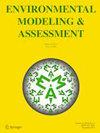Generalized Logarithmic Species-Area Relationship Resolves the Arrhenius-Gleason Debate
IF 2.6
4区 环境科学与生态学
Q3 ENVIRONMENTAL SCIENCES
引用次数: 1
Abstract
Abstract The species-area relationship (SAR) is widely applied in ecology. Mathematically, it is usually expressed as either a semi-log or power-law relationship, with the former being introduced by Gleason and the latter by Arrhenius. We here resolve the dispute about which form of the SAR to prefer by introducing a novel model that smoothly transforms between the Gleason semi-log (GSL) and Arrhenius power law (APL) forms. The model introduced has the form of ln q ( S ) = a + z ln A , with ln q being a generalized logarithmic function, which is a linear map ( y = x ) for q = 0 and a logarithmic map ( y = ln x ) for q = 1 and q can take any intermediate value between 0 and 1. We applied this model to 100 datasets (mostly islands), linking species richness to island area. The APL was the preferred model in 68% of head-to-head comparisons with the GSL. Both models were supported in 40% of cases. In just under half (44%) of the cases, an intermediate model best explained the data. The results demonstrate the utility of a simple intermediate SAR model. Visualizing the profile of the range of model fits for all q ∈ [0 , 1] (a q chart) allows us to gain extra insight into SARs not yielded by head-to-head comparisons of GSL and APL. The mathematics related to the generalized logarithmic function introduced here should have applications to other areas of ecological modelling.广义对数种面积关系解决了Arrhenius-Gleason之争
物种-面积关系(SAR)在生态学中有着广泛的应用。数学上,它通常表示为半对数或幂律关系,前者由格里森引入,后者由阿伦尼乌斯引入。我们在此通过引入一个在格里森半对数(GSL)和阿伦尼乌斯幂定律(APL)形式之间平滑转换的新模型来解决关于SAR形式的争论。引入的模型具有ln q (S) = a + z ln a的形式,其中ln q是一个广义对数函数,对于q = 0是一个线性映射(y = x),对于q = 1是一个对数映射(y = ln x), q可以取0到1之间的任意中间值。我们将该模型应用于100个数据集(主要是岛屿),将物种丰富度与岛屿面积联系起来。与GSL相比,APL是68%的首选模型。这两种模型在40%的案例中都得到了支持。在不到一半(44%)的案例中,中间模型最能解释数据。结果表明了一个简单的中间SAR模型的实用性。可视化所有q∈[0,1](q图)的模型拟合范围的轮廓,使我们能够获得额外的洞察力,而不是通过GSL和APL的直接比较产生的SARs。这里介绍的与广义对数函数相关的数学应该可以应用于生态建模的其他领域。
本文章由计算机程序翻译,如有差异,请以英文原文为准。
求助全文
约1分钟内获得全文
求助全文
来源期刊

Environmental Modeling & Assessment
环境科学-环境科学
CiteScore
4.50
自引率
4.20%
发文量
54
审稿时长
18-36 weeks
期刊介绍:
Environmental Modeling & Assessment strives to achieve this by publishing high quality, peer-reviewed papers that may be regarded as either instances of best practice, or as studies that advance the evolution and applicability of the theories and techniques of modeling and assessment. Consequently, Environmental Modeling & Assessment will publish high quality papers on all aspects of environmental problems that contain a significant quantitative modeling or analytic component, interpreted broadly. In particular, we are interested both in detailed scientific models of specific environmental problems and in large scale models of the global environment.
We invite models of environmental problems and phenomena that utilise, in an original way, the techniques of ordinary and partial differential equations, simulation, statistics and applied probability, control theory, operations research, mathematical economics, and game theory.
Emphasis will be placed on the novelty of the model, the environmental relevance of the problem, and the generic applicability of the techniques used. Generally, papers should be written in a manner that is accessible to a wide interdisciplinary audience.
 求助内容:
求助内容: 应助结果提醒方式:
应助结果提醒方式:


